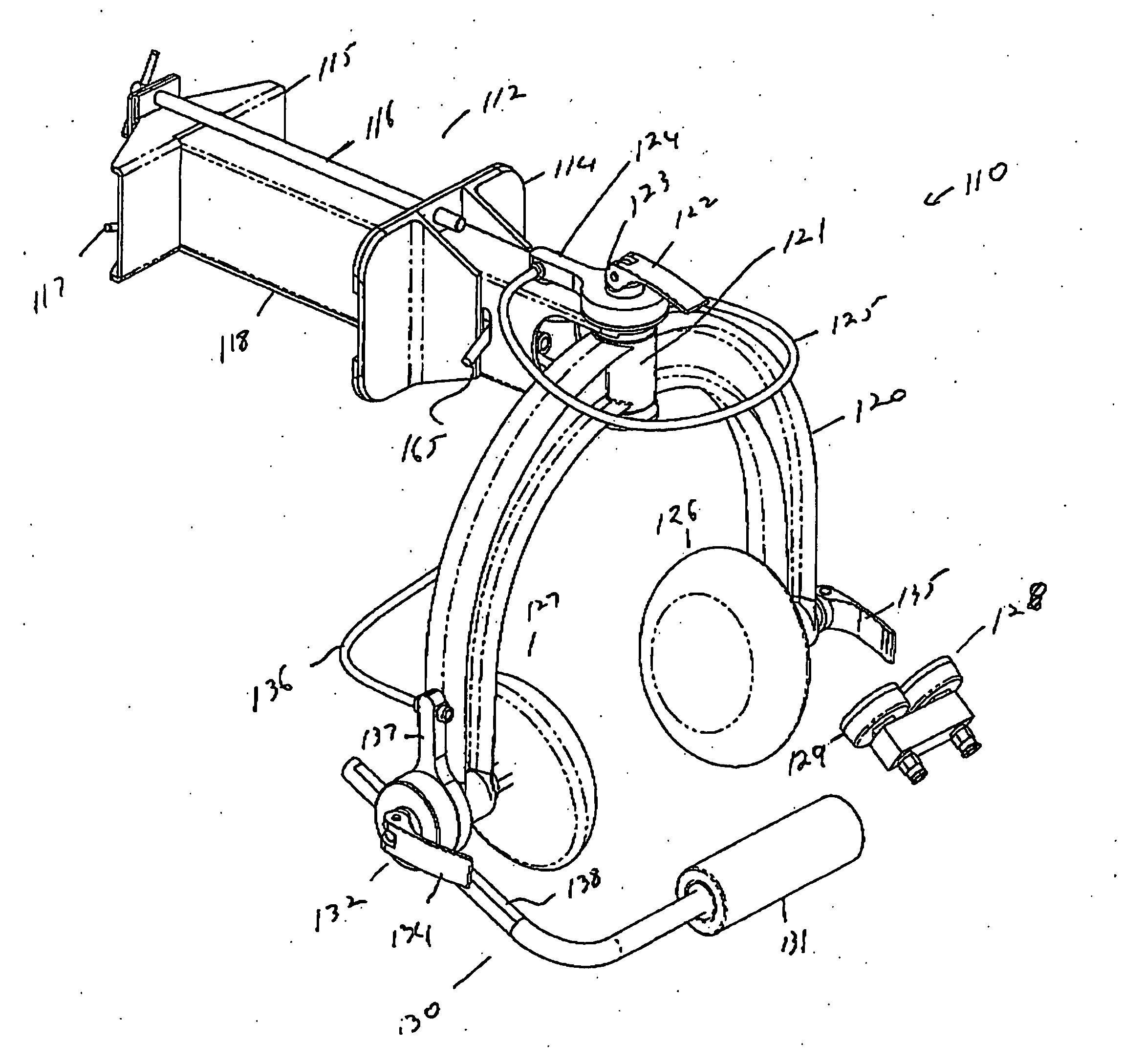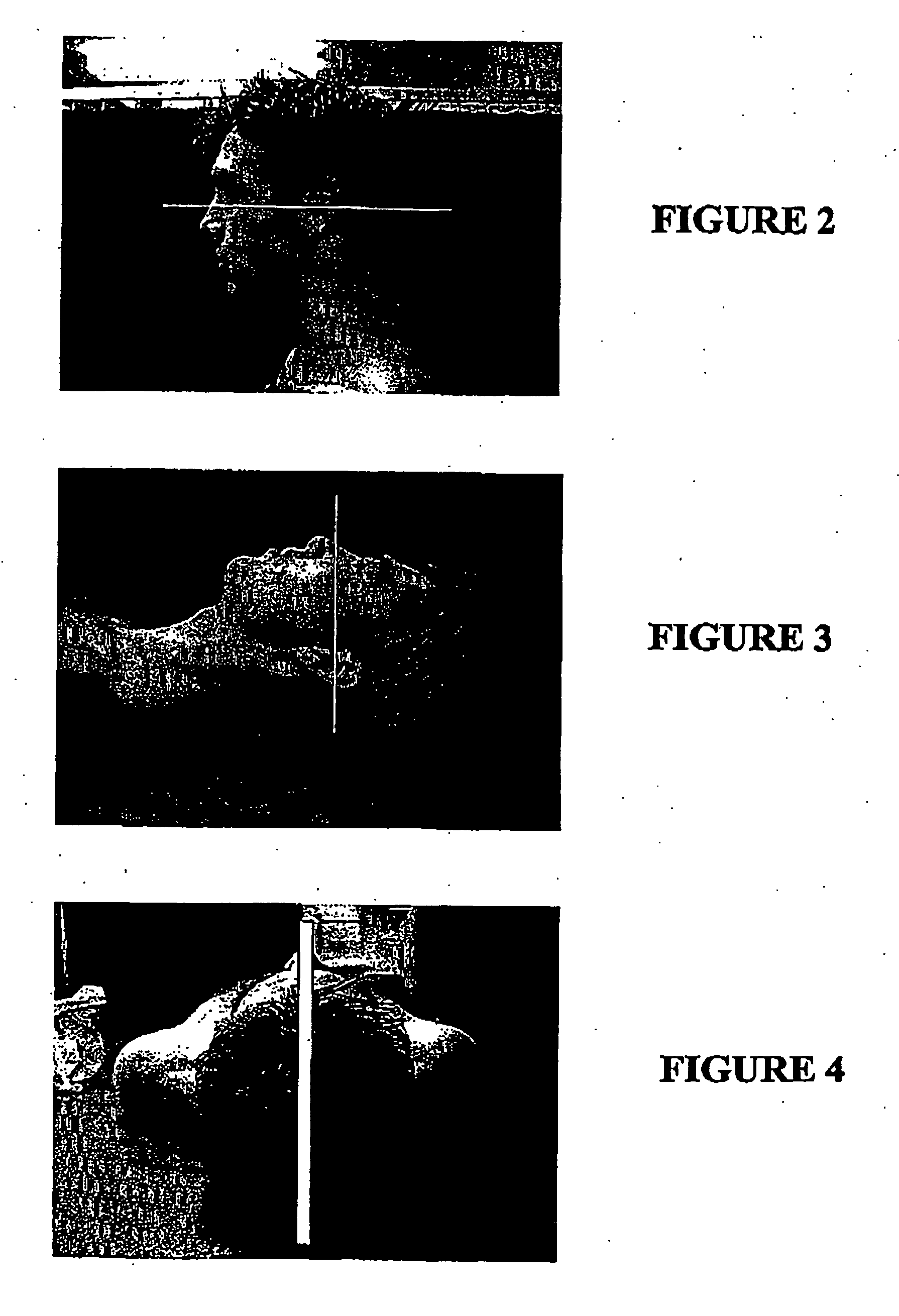Assessment Apparatus and Method
- Summary
- Abstract
- Description
- Claims
- Application Information
AI Technical Summary
Benefits of technology
Problems solved by technology
Method used
Image
Examples
example 2
[0181] This method was directed to AOR specific to primary articulations. This method used known bony anatomical landmarks that are representative of the AOR for motion of the articulations primarily targeted during C-C motion. For example the primary C-C articulation of C-C flexion and extension is the C0 / 1 (atlanto-occipital) motion segment. The radiographic located AOR for C0 / 1 flexion / extension occurs about a point slightly superior and anterior to the mastoid process of the skull (FIG. 5,8) [29-31] perpendicular to the sagittal plane. Torque measured about this AOR would represent the torque of the CC flexor or extensor muscles about the primary AOR of C-C flexion and extension. For C-C axial rotation the axis of rotation is near the vertex of the head perpendicular to the transverse plane and in line with the axis of rotation of the C1 / 2 (atlanto-axial articulation) articulation (FIG. 12), the principle articulation for C-C axial rotation. It is acknowledged that these motions...
example 3
Isometric Maximal Voluntary Contraction Muscle Test
[0213] The patient and C-CD are positioned corresponding to the patients AOR and in the predetermined C-C range as described above. The patient is asked to ‘nod their head such that their jaw pushes down onto the padded bar so that the head remains in contact with the surface it rests on’. The patient is asked to perform C-C flexion gently at first to warm up. When the therapist is satisfied the test is performed correctly the patient is asked to repeat the test but this time to perform the action as hard as possible. The patient is given visual feedback (FIG. 25) through an overhead display 36 of the increase in torque with their increasing effort. The visual feedback is displayed as an elevating mark on a graph. A rest period is given between trials. FIG. 20 is an example of the output for this test. A test-retest study has been performed to assess the reliability of C-C dynamometry in the measurement of C-C flexor muscle perform...
example 4
Isometric Endurance
[0214] A predetermined percentage (eg. 20 or 50%) of the person's maximal voluntary contraction or an arbitrary torque intensity is chosen. A visual display gives the patient the torque intensity level required. The participant is asked to ‘nod their head such that their jaw pushes down onto the padded bar to achieve the pre-determined torque intensity and is asked to maintain this torque intensity as accurately as possible for a predetermined time period or until the torque level decays beyond a certain level (eg. 50% of the pre-determined level). This may also be called a sustained voluntary contraction (SVC). FIG. 21 is an example of the recorded output from this test. Variations of these tests can be performed so that the patient may be asked to control the torque output only, or both torque and head weight force simultaneously.
[0215] The mechanical components of a preferred embodiment of the apparatus of the present invention are shown in FIGS. 26 and 27. T...
PUM
 Login to View More
Login to View More Abstract
Description
Claims
Application Information
 Login to View More
Login to View More - R&D
- Intellectual Property
- Life Sciences
- Materials
- Tech Scout
- Unparalleled Data Quality
- Higher Quality Content
- 60% Fewer Hallucinations
Browse by: Latest US Patents, China's latest patents, Technical Efficacy Thesaurus, Application Domain, Technology Topic, Popular Technical Reports.
© 2025 PatSnap. All rights reserved.Legal|Privacy policy|Modern Slavery Act Transparency Statement|Sitemap|About US| Contact US: help@patsnap.com



